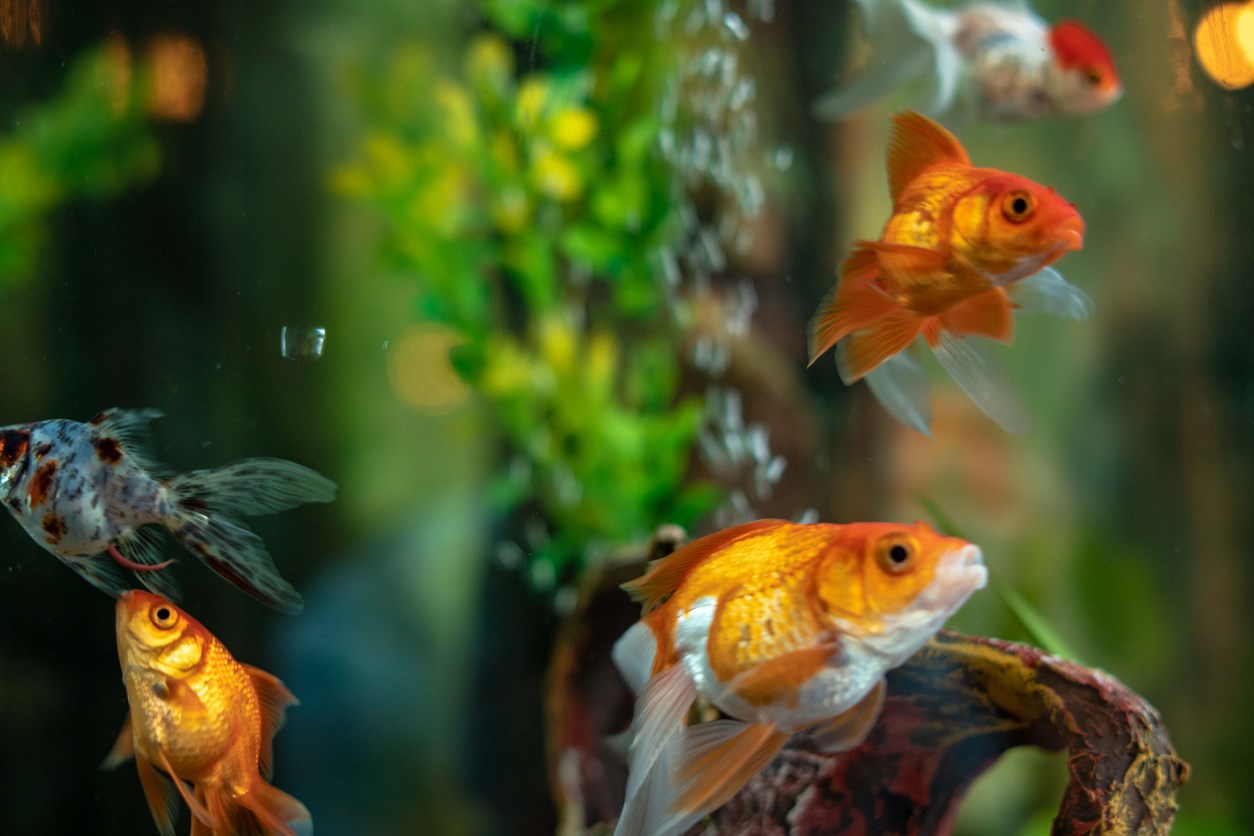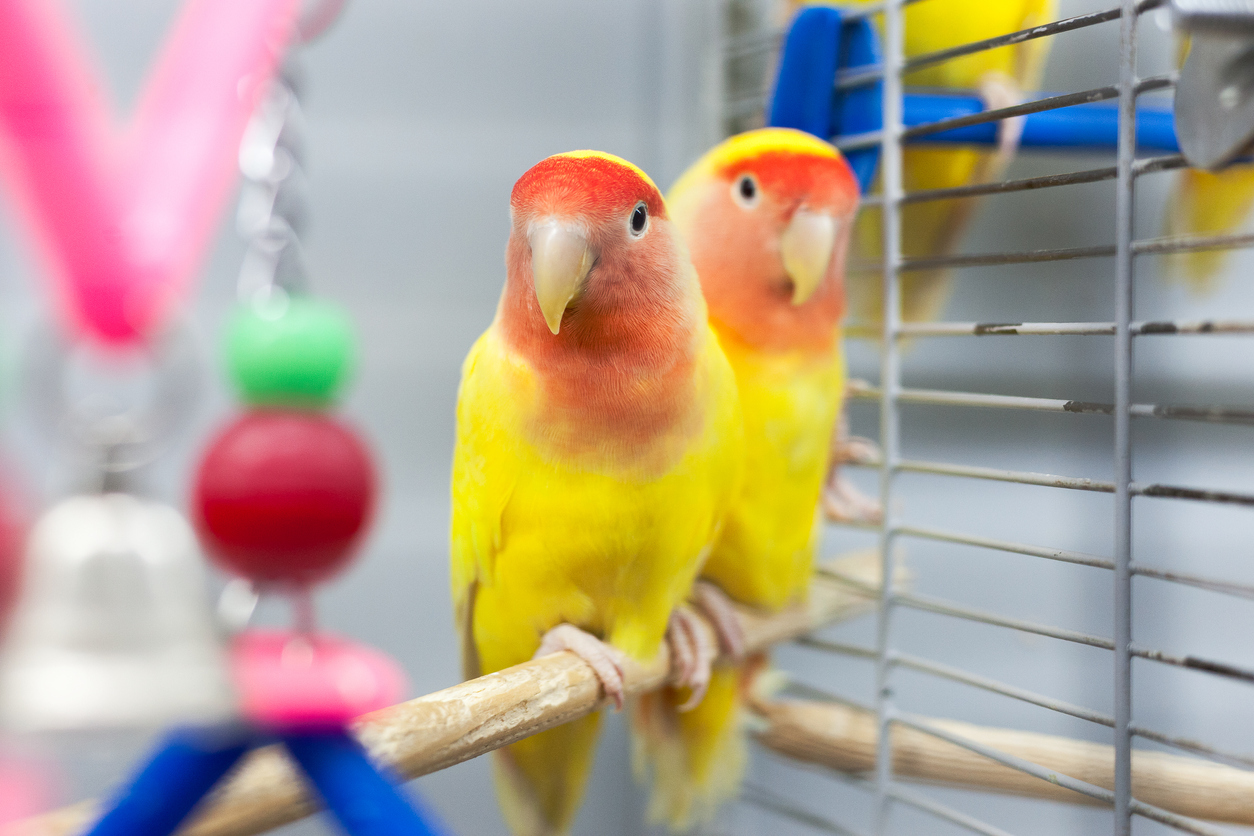Having a pet can bring a lot of happiness to a home, that is, if you aren’t allergic to them. While pets still bring joy to people with allergies, they also bring a handful of allergy symptoms too. Finding the right pet for you is already challenging without the allergies. Thankfully, there are options when it comes to finding the right pet for you and your allergies.
Although these animals may be considered a safer choice, it is always a good idea to see an allergist before making your decision.
What are Hypoallergenic Pets?
The word hypoallergenic is frequently used to describe pets that are supposedly safe for those with allergies. A common misunderstanding it that it is the hair that causes allergy symptoms directly. Instead, animal or pet dander is the biggest cause of allergy symptoms. Animal dander is a protein found in flecks of skin, saliva, urine or feces from animals. When pets shed their hair, they also shed dander. Therefore, the animals that don’t shed or shed minimally are labeled as hypoallergenic since less shedding generally means less dander released.
To learn more about pet dander and managing your pet’s dander click here.
"Hypoallergenic” Mammals
All warm-blooded animals produce the proteins that cause allergy symptoms, so to some degree they are never completely safe for those with allergies. While this is true, it’s hard to resist bringing a furry friend into your home. Therefore, we have created a guide to some of the safer choices to these animals.
Dogs and Cats
While there is no such thing as a truly hypoallergenic dog or cat, there are breeds that produce fewer allergens and are therefore a safer choice for those with allergies. The dogs and cats that are labeled as hypoallergenic typically shed less, are hairless, or produce less Fel d 1 (this applies to cats only).
Cats tend to cause more allergy symptoms than dogs since they groom themselves more frequently. While both dogs and cats groom themselves, the major allergen responsible for cat allergy symptoms is Fel d 1, a protein produced by their skin or saliva. “Worldwide, the domestic cat, Felis domesticus, is one of the most frequently encountered pets. It is a major source of allergens in the indoor environment and is placed in second position after dust mites for its involvement in the incidence of allergic respiratory diseases.” (National Center for Biotechnology Information NCBI)
Smaller Mammals

Smaller mammals are similar to their larger counterparts in terms of allergens they produce. While this is true, they are generally a safer choice due to their small size and living needs. Due to their small size, they produce less allergens in general than larger mammals. In addition to this, most live within cages that seclude them to one room or area of the house, where larger mammals spread their allergens around the entire home.
While some rabbits and guinea pigs are a good choice, the longer haired ones should be avoided. These pets also require hay for eating. You may not be allergic to the pet itself, but the hay it eats. Before purchasing one, it’s important to receive allergy testing for their foods as well.
With all smaller mammals, people with allergies should avoid or take caution to handling these pets depending on how severe their allergies are. Sharing a living space with these animals may be okay for allergy symptoms but irritate them when directly in contact.
Common small mammal pets include:
- Hamsters
- Guinea pigs
- Rabbits
- Mice and rats
- Chinchillas
- Ferrets
- Gerbils
Although these animals may have similarities, they often have differentiating care requirements. Before deciding to purchase one of these, research what they need to be taken proper care of.
Pigs
Pigs may not seem like a typical choice when thinking of pets to keep in your home. Even so, they have become more popular in recent years. Pigs shed in a different way than other mammals, which can be helpful for allergies. “Most pigs will “blow” their coats once or twice a year. They will lose all their hair in the summer months and it will reappear by winter” (Pig Placement Network)
Pigs may be gaining in popularity now, but there are some reasons why they aren’t always the best choice for everyone. A new trend is to purchase mini pigs, so they are smaller in size and therefore more manageable. What many don’t realize is that these pigs are more often than not underfed or malnourished from a young age to stunt their growth, and that healthy pigs can grow up to 500 pounds. Even if your pig is a considered to be a mini pig or predicted to be a smaller size, they can grow bigger than expected.
Consider Pets Outside of Mammals
When searching for the best hypoallergenic pets, the results typically show examples of mammals, overlooking other viable options for pets. Before deciding what type of pet to get, consider some choices outside of mammals.
Fish

Fish can be a perfect addition to your home from their lack of allergens to the potential appearance of their aquariums. In comparison to other pets, fish are considered one of the lower maintenance pets.
The only potential problem with fish in relation to allergies is mold. The humidity of the aquarium may lead to growth of mold within the room it’s stored or mold within the aquarium itself. If you take proper care of the aquarium, this should not be a problem.
Reptiles and Amphibians
Reptiles and amphibians are a safer choice for those with allergies because they do not produce the proteins like warm-blooded animals do. The biggest issues with these pets is the food they eat. You may not be allergic to your reptile, but you may be allergic to the insects they eat. Being tested for all animals or insects that you are allergic to is important before purchasing one of these animals.
Amphibians and reptiles may seem to resemble each other, making it difficult to distinguish between them without prior knowledge. Before purchasing one, make sure to do your research because they will each need different care.
- Amphibians love the water and will be depending on having it within their environment. Some of the most popular amphibians to take home as pets include frogs, toads and salamanders.
- Reptiles are independent of water and include snakes, turtles and lizards.
Birds

While birds trade fur for feathers, they still produce dander or feather dust. However, they are generally considered to be a safe choice for allergy sufferers. For those who are especially sensitive, the species of bird can make a difference too.
Safest birds for those with allergies:
- Parakeets (or Budgies)
- Toucans
- Eclectus Parrots
- Pionus Parrots
- Macaws
Tips for Choosing a Pet: Do Your Research
Pets are a long-term commitment. Before you bring a pet home, make sure it is the right decision for you and anyone else living in your home. Not only does your pet not want to leave your home, but you don’t want to make them leave either.
- Spend time with the animal you are interested in owning before taking one home. This will let you know if you like the animal itself and have any allergy symptoms from it.
- See an allergist in order to learn more about your allergies. Learning more about your allergies from an expert conclusively tells you what to avoid and what may be a safer choice.
